|
分类 |
n(%) |
问卷得分(分,x ̅±S) |
统计值 |
P |
LSD-t(P<0.05) |
|
|
性别 |
男 |
114(35.1) |
63.62±9.40 |
1.076# |
0.280 |
|
|
女 |
211(64.9) |
62.49±8.77 |
||||
|
年龄 |
①18~40岁 |
189(58.1) |
64.19±8.44 |
5.546* |
0.005 |
①>②③ |
|
②41~59岁 |
111(34.2) |
61.43±9.34 |
||||
|
③≥60岁 |
25(7.7) |
59.44±9.77 |
||||
|
民族 |
汉族 |
317(97.5) |
62.91±9.07 |
0.204# |
0.830 |
|
|
少数民族 |
8(2.5) |
62.25±5.33 |
||||
|
婚姻 |
已婚 |
198(60.9) |
62.44±8.70 |
0.947* |
0.380 |
|
|
未婚 |
119(36.6) |
63.75±9.36 |
||||
|
其他 |
8(2.5) |
61.12±10.80 |
||||
|
职业 |
在职 |
108(33.2) |
63.00±9.85 |
0.152# |
0.870 |
|
|
非在职 |
217(66.8) |
62.83±8.57 |
||||
|
文化程度 |
①小学及以下 |
18(5.5) |
55.22±12.69 |
9.485* |
<0.001 |
①<②<③④ |
|
②中学 |
89(27.4) |
60.52±8.74 |
||||
|
③大专 |
63(19.4) |
63.96±6.84 |
||||
|
④本科及以上 |
155(47.7) |
64.70±8.73 |
||||
|
家庭人均月收入 |
①<3 000元 |
30(9.2) |
59.86±8.60 |
7.304* |
0.001 |
①②<③ |
|
②3 000~5 000元 |
85(26.2) |
60.55±9.68 |
||||
|
③>5 000无 |
210(64.6) |
64.27±8.49 |
||||
|
是否经常使用电子设备 |
是 |
286(88.0) |
63.42±8.74 |
2.912# |
0.004 |
|
|
否 |
39(12.0) |
59.00±9.99 |
||||
|
确诊干眼时间 |
<1年 |
166(51.1) |
62.20±8.92 |
1.057* |
0.349 |
|
|
1年~2年 |
71(21.8) |
63.90±8.96 |
||||
|
>2年 |
88(27.1) |
63.37±8.97 |
||||
|
是否主动查询疾病知识 |
是 |
223(68.6) |
65.08±8.24 |
6.952# |
<0.001 |
|
|
否 |
102(31.4) |
58.09±8.76 |
||||
|
中国干眼问卷得分 |
<7分 |
53(16.3) |
62.22±10.25 |
-0.588# |
0.557 |
|
|
≥7分 |
272(83.7) |
63.02±8.75 |
注:#为t值,*为F值。
Note: # represents the t-value, and * represents the F-value.
|
实际得分 |
标准分 (x ̅±S)/分 |
水平划分[n(%)] |
|||
|
差 |
中等 |
良好 |
|||
|
知识维度 |
9.89±4.88 |
61.86±30.55 |
134(41.2) |
101(31.1) |
90(27.7) |
|
态度维度 |
26.92±2.24 |
96.16±8.03 |
3(0.9) |
22(6.8) |
300(92.3) |
|
行为维度 |
26.06±5.43 |
72.41±15.09 |
77(23.7) |
176(54.1) |
72(22.2) |
|
总问卷 |
62.89±9.00 |
78.61±11.25 |
10(3.1) |
226(69.5) |
89(27.4) |
|
条目 |
得分(x ̅±S)/分 |
|
|
知识 |
10.您知道长期服用以下药物(如抗组胺药、抗抑郁药、抗焦虑药、异维A酸等)可能会引起干眼吗 |
0.23±0.42 |
|
9.您知道免疫系统疾病(如类风湿性关节炎、系统性红斑狼疮、8.干燥综合征、移植物抗宿主病)会引起干眼吗 |
0.34±0.47 |
|
|
您知道眼部手术(如白内障手术、屈光手术等)可能会引起干眼吗 |
0.39±0.48 |
|
|
态度 |
19.您认为减少佩戴隐形眼镜是重要的 |
3.67±0.75 |
|
22.您认为积极治疗焦虑、抑郁等精神疾病是重要的 |
3.78±0.58 |
|
|
21.您认为避免长时间处于烟尘、干燥环境是重要的 |
3.88±0.43 |
|
|
行为 |
28.您会尽量避免长时间用眼吗 |
2.51±0.89 |
|
32.您会进行规律运动、锻炼身体吗 |
2.68±0.96 |
|
|
26.您会主动获取干眼相关健康知识吗 |
2.70±0.99 |
|
赋值 |
|
|
年龄/岁 |
实测值 |
|
文化程度 |
000=小学及以下,001=中学,010=大专,100=本科及以上(小学及以下为参照组别) |
|
家庭人均月收入 |
<3 000元=1,3 001~5 000元=2,>5 000元=3 |
|
是否经常使用电子设备 |
否=0,是=1 |
|
是否主动查询疾病知识 |
否=0,是=1 |
|
变量 |
β值 |
B值 |
标准误 |
t值 |
P值 |
B值的95%CI |
|
|
下限 |
上限 |
||||||
|
(常量) |
— |
54.104 |
3.161 |
17.118 |
<0.001 |
47.886 |
60.323 |
|
年龄/岁 |
-0.111 |
-0.075 |
0.036 |
-2.027 |
0.039 |
-0.147 |
-0.004 |
|
文化程度 小学及以下 |
1 |
|
|
|
|
|
|
|
中学 |
0.182 |
3.674 |
2.209 |
1.664 |
0.097 |
-0.671 |
8.020 |
|
大专 |
0.262 |
5.594 |
2.426 |
2.459 |
0.014 |
1.192 |
10.373 |
|
大专及以上 |
0.346 |
6.226 |
2.3336 |
2.665 |
0.008 |
1.630 |
10.821 |
|
家庭人均月收入/元 |
0.051 |
0.693 |
0.774 |
0.896 |
0.371 |
-0.830 |
2.216 |
|
是否主动查询疾病知识 |
0.329 |
6.635 |
0.979 |
6.504 |
<0.001 |
4.439 |
8.290 |
|
是否经常使用电子设备 |
0.021 |
0.584 |
1.543 |
0.378 |
0.705 |
-2.451 |
3.619 |
注:F=11.812,P<0.001,B:非标准化回归系数,β值:标准化回归系数。
Note:F=11.812,P<0.001,B: Non standardized regression coefficient, β value: standardized regression coefficient.


点击右上角菜单,浏览器打开下载